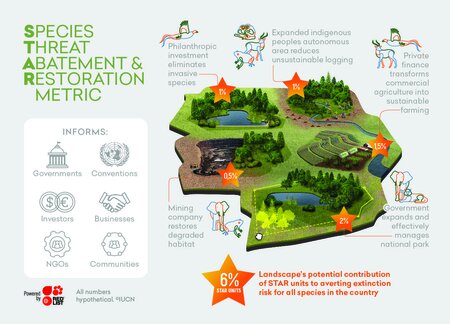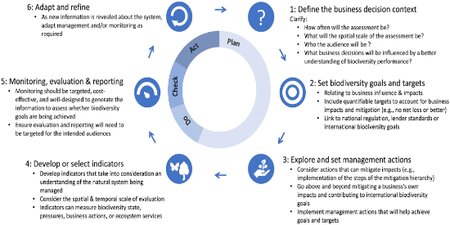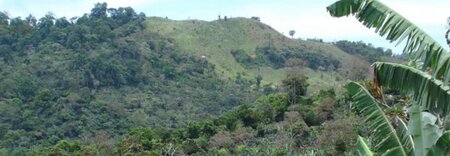Developing metrics
Biodiversity metrics for business – solutions made to measure
“How do I measure biodiversity?” and “What is the biodiversity equivalent of a tonne of carbon?” are questions that many companies ask us. Biodiversity metrics – standardised measures of defined components of biodiversity – provide the answers.
Businesses need biodiversity metrics for many reasons, including regulatory and lender requirements, stakeholder expectations, corporate social responsibility, or for setting corporate targets to align with national and global goals.
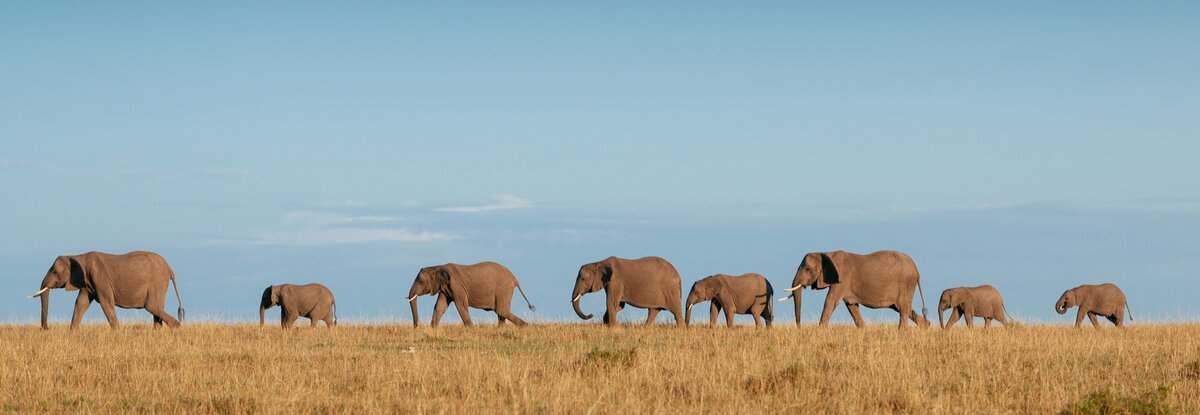
What can biodiversity metrics do?
Biodiversity metrics enable companies to measure biodiversity baselines and understand or predict historical, current and potential future impacts. They help to focus management and mitigation efforts where they are most needed and to track progress at different scales. Metrics also assess opportunities and potential biodiversity gains.
Which biodiversity metrics are important for companies?
Biodiversity is the totality of life on earth – it’s complex, dynamic, diverse and place-specific. Unlike carbon, there is no single universal measure of biodiversity. However, there are key components of biodiversity that are relevant to companies, and standardised frameworks for measuring these:
- Ecosystems: Ecosystems are species assemblages and their interactions with both each other and the physical environment. A standard measurement framework for ecosystems is Extent × Condition, combining physical area or volume with a measure of its condition compared to the intact state. Units may, for example, be expressed as quality-hectares or weighted hectares. Extent × Condition is the framework adopted by the UN for ecosystem accounting and is widely used in corporate biodiversity assessments.
- Species: Population size is a fundamental metric that informs assessment of a species’ status and viability. Species metrics are often used alongside ecosystem metrics for species considered of special concern because they are highly threatened, vulnerable to impacts, highly mobile or particularly significant for stakeholders.
Ecosystem and species population metrics are applicable broadly and together provide a sound basis for understanding both positive and negative company impacts. As well as these measures of biodiversity state, it is often important to consider the benefits that biodiversity provides to people, referred to as nature’s contribution to people or ecosystem services. Measures for these can be incorporated in ecosystem condition, or can be assessed separately depending on the context.
Understanding biodiversity significance
Ecosystem and species measures help assess the quantity of biodiversity, including losses or gains. However, since biodiversity varies greatly from place to place, the value of those losses or gains will also vary. Additional metrics of biodiversity significance are therefore useful for interpreting findings.
There is no single ‘right’ way to assess biodiversity significance. Science helps to identify the aspects to consider but, in the end, significance is a value judgement about which of these aspects are most important.
Aspects often incorporated in significance measures include species or ecosystem rarity and the risk of species extinction or ecosystem collapse. Significance may also be defined through specific criteria for areas of high biodiversity importance, such as key biodiversity areas or Critical Habitat.
Measuring biodiversity in practice
Within the general frameworks of ecosystem or species metrics, the measures and methods used to collect data can be adjusted to meet specific needs and contexts:
- Big picture assessments for early risk and opportunity screening of sites, entire portfolios or value chains, can draw on global models and data layers. Examples are the GLOBIO model, the Species Threat Abatement and Restoration (STAR) metric and the Biodiversity Intactness Index (BII).
- For a rapid or large area assessment where more resolution is required, data layers on the physical structure of ecosystems and pressures on them can be used as proxies for biodiversity condition. Examples include remotely-sensed measures of forest structure or ecological intactness and connectivity.
- At specific sites, especially where there is biodiversity of high significance, detailed assessment can use a wide variety of field-based measurements, ranging from semi-quantified habitat integrity assessments to techniques such as vegetation plots, camera trapping or environmental DNA (eDNA) surveys.

Practical considerations
Biodiversity metrics necessarily simplify some of the complexities of biodiversity. Stakeholders may have concerns that metrics leave out important biodiversity components or give a misleading impression of rigour. It is important to consider whether the choice of biodiversity metrics, data sources or measurement techniques is fit for the intended use, and it’s good practice to include relevant stakeholders in this process.
We apply biodiversity metrics to support our clients at a range of scales from corporate strategy to individual projects. Frameworks such as extent × condition are often applicable, but there is no one-size-fits-all. It’s important to assess which metrics are most appropriate for a given use case, considering trade-offs between practicality, completeness, detail and scaleability.
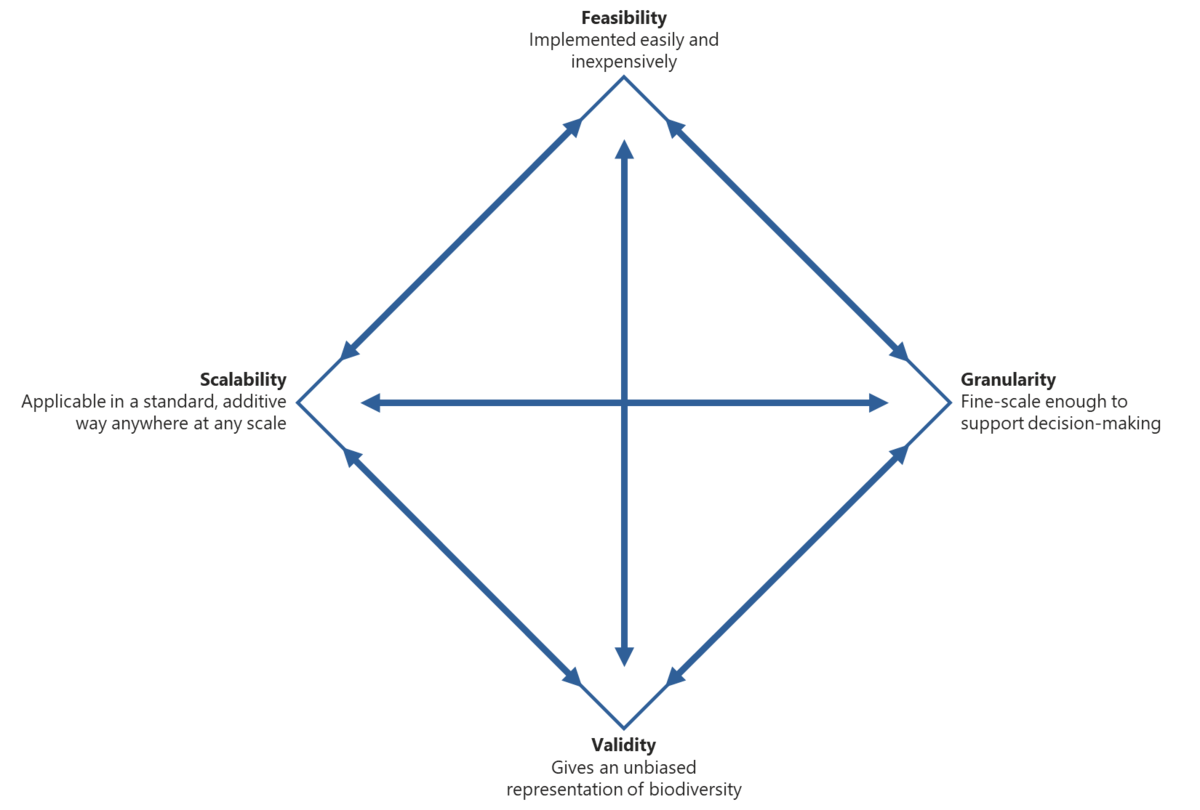
We have supported companies across many sectors to identify or develop appropriate biodiversity metrics. Examples of our work developing metrics include:
- Advising companies and projects on the best metrics for site-scale biodiversity risk management.
- Working with companies to create customised extent × condition, species population or other metrics to meet specific requirements, such as designing a novel metric to assess offset gains for threatened vultures for a Kipeto wind project.
- Developing a Biodiversity Return on Investment Metric (BRIM) for IUCN and Vulcan Foundation. Working with IUCN and others to develop this into the Red-list based Species Threat Abatement and Restoration (STAR) metric and make this available (with guidance) via the IBAT web platform.
- Working with the Cambridge Institute of Sustainability Leadership (CISL) on the development of a Biodiversity Impact Metric for global supply chains. This metric incorporates the Mean Species Abundance (MSA) measure of biodiversity from the GLOBIO model.
- Supporting the EU Business and Biodiversity Platform to develop a review of available metrics and relevant case studies.
- For WWF Switzerland, critically reviewing current biodiversity measurement frameworks and identifying metrics best suited to screen and track the outcomes of impact investments
- Technical and advisory engagement in forums and processes focused on biodiversity metrics for business, for example the UNEP-WCMC Biodiversity Indicators for Site-based Impacts, the EU-funded Align project and as co-lead for the Science-based Targets Network Biodiversity Hub.
- Contributing to the development of the Taskforce on Nature-related Financial Disclosures framework, including authoring biome-specific guidance documents and acting as technical partner for the Metrics & Targets workstream.

